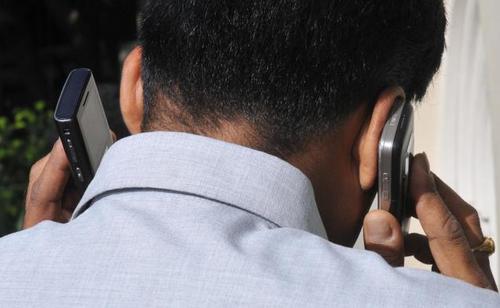Why Does the US Lag in Cellphone Precautions? WHO Knows

Michael Kaufman, Medical Journalist
4/26/2013
4/26/2013

The World Health Organization's International Agency for Research on Cancer (IARC) has finally published its long-awaited monograph on cancer risk to humans from exposure to cellphone radiation and other radiofrequency electromagnetic fields.
The conclusions suggest that "it is time for all nations to review their cell phone regulatory standards and testing procedures in order to protect their citizens from preventable risks," Joel M. Moskowitz, PhD, of the School of Public Health at the University of California, Berkeley, said in a press release. "Also, it is critical that governments provide ample warnings to cell phone users [on] how to use their phones safely."
Moskowitz cited one particular risk:
According to the monograph, "Radiofrequency electromagnetic fields are possibly carcinogenic to humans (Group 2B)." (p. 421) Children are particularly vulnerable to this carcinogenic effect as "the average exposure from use of the same mobile phone is higher by a factor of 2 in a child's brain and higher by a factor of 10 in the bone marrow of the skull." Also, the child's brain is developing at a greater rate than the adult brain.
The IARC reviewed extensive research examining users of legally acquired cellphones that passed regulatory standards. Though they were exposed to nonthermal doses of microwave radiation from their cellphones, the IARC concluded there is (limited) evidence that such exposure increases the risk of glioma and acoustic neuroma. "Thus, it is time for all nations to review their cell phone regulatory standards and testing procedures in order to protect their citizens from preventable risks," Moskowitz said. "Also, it is critical that governments provide ample warnings to cell phone users how to use their phones safely."
The 471-page report was prepared by a working group of 31 international experts who met in Lyon, France, in May 2011. But Moskowitz said some recent studies that further support the evidence of increased cancer risk from cellphone radiation exposure were not reviewed. Also, "other research has found that cell phone radiation has additional harmful effects on humans, especially on sperm and the fetus."
He expanded on his concerns in an email to healthcare activists. "Fifteen nations and the European Union have issued precautionary warnings about cell phone radiation," he wrote. "Many warnings strongly encourage limiting use by children and teenagers as well as adherence to cell phone manufacturers' recommendations that you must keep the phone away from your body when it is turned on." These recommendations, of course, appear in small print.
Federal agencies have been in denial about health risks from cellphone radiation, he wrote, because of "tremendous political and economic power" exerted by the wireless industry. "The industry has been very successful in co-opting many scientists worldwide and employs many of the tactics developed by the tobacco industry."
Thus, despite numerous attempts, no state has been able to pass a cellphone precautionary health warning bill. San Francisco (where else?) has adopted a precautionary cellphone ordinance. However, a federal lawsuit filed on behalf of the wireless industry may soon force San Francisco to rescind it. "The free speech rights of industry trump the public's 'right to know.'"
The irony, he says, is that no one is suggesting we give up cellphones or WiFi. "We are simply arguing we need to develop safer technologies, stronger regulations, and teach people how to use these technologies in a safe manner."
My wife has been putting all calls on speaker phone at home lately, especially since her recent surgery to remove a parotid tumor adjacent to her right ear -- where she used to hold her phone. And for my five kids, chronic cellphone users all, I have two words: hands free.
Reference:
- http://www.prlog.org/12122198-who-monograph-on-cancer-risk-from-mobile-phone-use-released.html
No comments:
Post a Comment